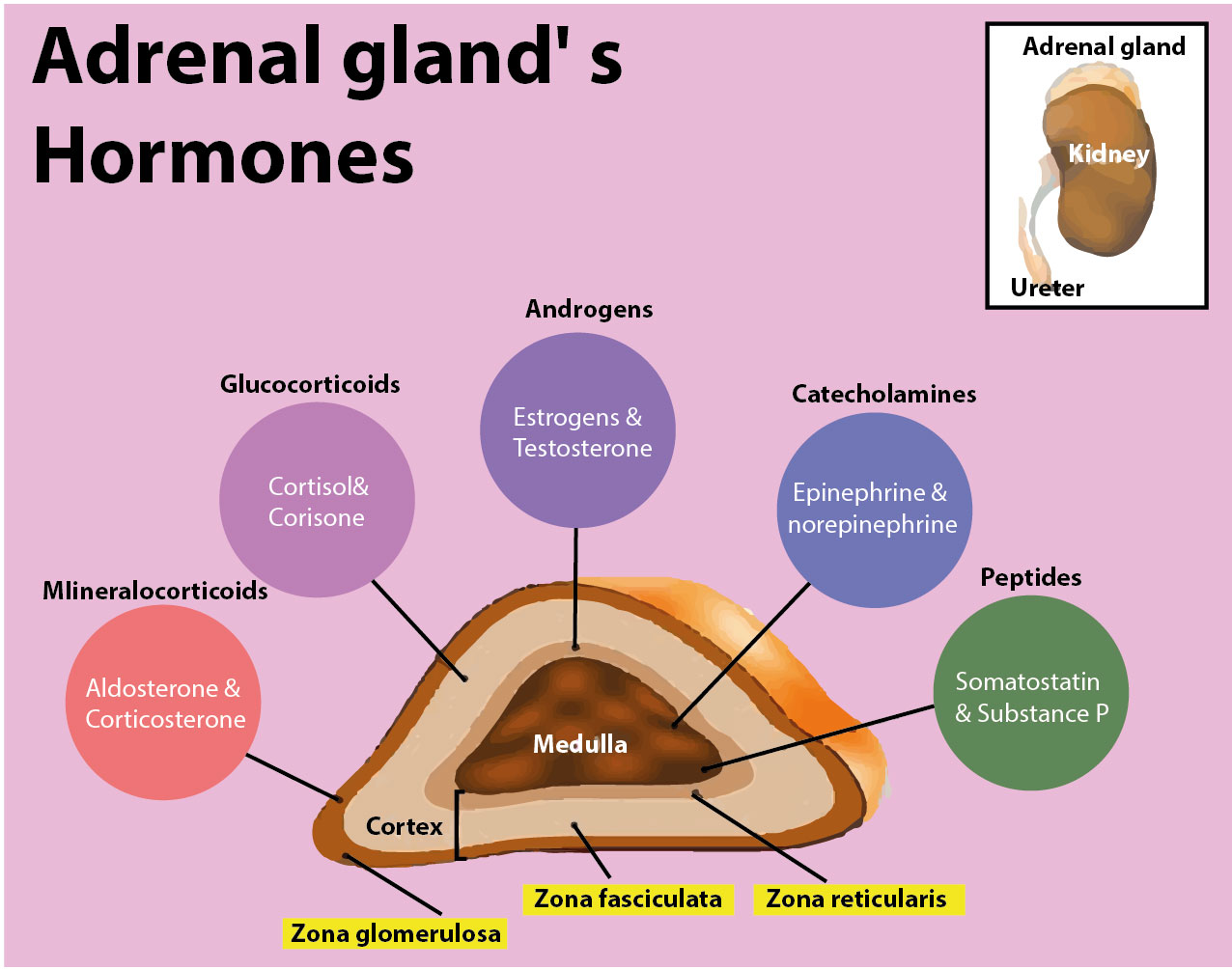
What is the function of the adrenaline hormone in the body?
Answer
445.2k+ views
Hint: Epinephrine, also called adrenaline, a hormone that is secreted mainly by the medulla of the adrenal glands. Epinephrine is very closely related to the structure of norepinephrine,, differing only in the presence of a methyl group on the nitrogen side chain.
Complete answer:
Adrenaline hormone which is commonly known as an emergency hormone or triple F hormone (FFF- Fight, Fright, Flight). This hormone is produced within the medulla within the adrenal glands and also in the number of the central nervous system's neurons. Within a few minutes during a stressful situation, it's quickly released into the blood, sending impulses to organs to make a selected response. The impact of adrenaline which releases in our body are as follows:
Adrenaline triggers the body's fight-or-flight response. Due to this reaction, air passages dilate to supply the muscles with the oxygen they have to either fight the danger or flee.
It also triggers the blood vessels to contract to re-direct blood toward major muscle groups, including the guts and lungs.

The body's ability to feel pain will surely decrease as a result of adrenaline.
Blood vessels dilate (enlarge) in our muscles.
Blood vessels constrict in our alimentary canal to slow digestion.
Kidneys make more renin (to increase blood pressure).
Glucose production increases, for energy.
After the strain has subsided, adrenaline’s effect can last for up to an hour.
Note: The human being has two adrenal glands, out of which the right gland is pyramidal in shape and the left gland is semilunar in shape and also the left adrenal gland is usually comparatively larger than the right adrenal gland.
Complete answer:
Adrenaline hormone which is commonly known as an emergency hormone or triple F hormone (FFF- Fight, Fright, Flight). This hormone is produced within the medulla within the adrenal glands and also in the number of the central nervous system's neurons. Within a few minutes during a stressful situation, it's quickly released into the blood, sending impulses to organs to make a selected response. The impact of adrenaline which releases in our body are as follows:
Adrenaline triggers the body's fight-or-flight response. Due to this reaction, air passages dilate to supply the muscles with the oxygen they have to either fight the danger or flee.
It also triggers the blood vessels to contract to re-direct blood toward major muscle groups, including the guts and lungs.

The body's ability to feel pain will surely decrease as a result of adrenaline.
Blood vessels dilate (enlarge) in our muscles.
Blood vessels constrict in our alimentary canal to slow digestion.
Kidneys make more renin (to increase blood pressure).
Glucose production increases, for energy.
After the strain has subsided, adrenaline’s effect can last for up to an hour.
Note: The human being has two adrenal glands, out of which the right gland is pyramidal in shape and the left gland is semilunar in shape and also the left adrenal gland is usually comparatively larger than the right adrenal gland.
Recently Updated Pages
Glucose when reduced with HI and red Phosphorus gives class 11 chemistry CBSE

The highest possible oxidation states of Uranium and class 11 chemistry CBSE

Find the value of x if the mode of the following data class 11 maths CBSE

Which of the following can be used in the Friedel Crafts class 11 chemistry CBSE

A sphere of mass 40 kg is attracted by a second sphere class 11 physics CBSE

Statement I Reactivity of aluminium decreases when class 11 chemistry CBSE

Trending doubts
The reservoir of dam is called Govind Sagar A Jayakwadi class 11 social science CBSE

10 examples of friction in our daily life

Difference Between Prokaryotic Cells and Eukaryotic Cells

State and prove Bernoullis theorem class 11 physics CBSE

Proton was discovered by A Thomson B Rutherford C Chadwick class 11 chemistry CBSE

State the laws of reflection of light




